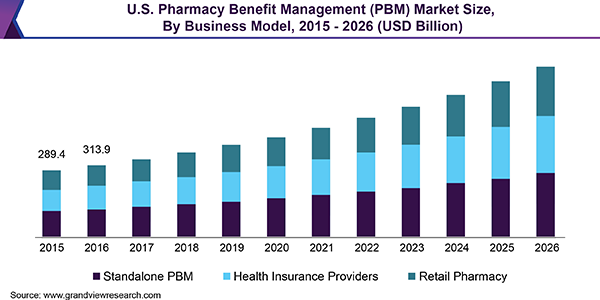The analysis of more than 400,000 prescriptions from about three dozen pharmacies across the state in the first quarters of 2018 and 2019 produced four major conclusions:
1) Ohio’s largest Medicaid pharmacy benefit manager, CVS Caremark, increased its rates for specialty drugs at the beginning of this year, even though the cost of many of them was dropping nationally. Along with raising the price for Ohio taxpayers, CVS benefits from the inflated cost because its PBM directs many of these prescriptions to CVS specialty-drug pharmacies. The price increases took effect as Ohio eliminated the old “spread pricing” system in which pharmacy benefit managers, a middlemen in the drug supply chain, walked away with as much as $200 million a year in profit.
2) The state’s new “pass through” system has generated better results for Ohio pharmacists. The amounts they are receiving from PBMs above the pharmacies’ costs to buy Medicaid drugs more than tripled after the sweeping changes this year. The bad news: That $6.25 margin per prescription still falls well short of the standard $9.48 deemed by pharmacies as their break-even point.
3) CVS Caremark’s reimbursements to Ohio pharmacies for Medicaid prescriptions are well under half those of the other pharmacy benefit manager handling Ohio Medicaid money, UnitedHealth Group’s OptumRx. Many of CVS’ reimbursements fluctuated wildly from year to year for the same drug, seemingly without relation to the actual cost of that drug.
4) A plan added to the proposed state budget by the Ohio Senate last week that would earmark $100 million to ailing Ohio pharmacies might end up enriching the PBMs instead.
Tyrone’s Commentary:
Antonio Ciaccia, Director of Government & Public Affairs for the Ohio Pharmacists Association, describes what CVS did this way: “The state slapped their hand and said, ‘Stop taking money from us this way.’ They say, ‘OK, we’ll take it another way.”
There is a formal name for the tactic so accurately described above by Antonio. The name for this tactic is ballooning. It occurs when one revenue stream is cut off only for the PBM to shift that lost revenue to a different source. Some readers might mistake my position on transparency to mean lower costs across the board.
It is true lower costs are often the result of better transparency. However, if a PBM is radically transparent by revealing its “take home” to clients, no matter the cost, and the purchaser accepts I’m okay with that. Maybe the purchaser believes a premium is deserved for brand recognition, for example.
If all the cards are on the table and a purchaser of PBM services selects the highest cost option, so be it. The key is getting all the cards on the table which is driven on the buy-side by eliminating information asymmetry. Information asymmetry occurs when one party has significantly more information than another or is better at interpreting that information. More important, the party with more information takes advantage of its position.
In business, asymmetric information often leads to a lack of transparency and abhorrent price disadvantages for purchasers. It is asymmetric information and the ability to interpret the information that is causing overpayments from state governments and self-funded employer groups alike.
The solution to eliminating asymmetric information starts with education. As long as NFPBMs or non-fiduciary pharmacy benefit managers have better information and are more adept at interpreting that information, I’m afraid you will always overpay.










